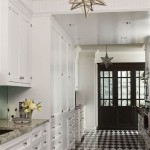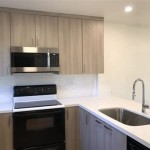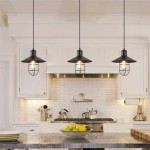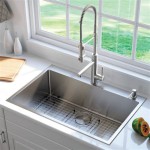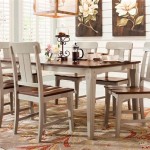Pantry Storage Cabinets For Kitchen: Optimizing Space and Organization
Pantry storage cabinets are a fundamental component of a well-functioning kitchen. They provide dedicated space for storing food items, kitchen essentials, and often, small appliances. The implementation of well-designed pantry cabinets can significantly improve kitchen organization, efficiency, and overall aesthetics. This article explores the diverse types of pantry storage cabinets available, their benefits, and essential considerations for selecting the ideal solution for individual kitchen needs.
Effective pantry storage transcends simply allocating space. It involves thoughtful planning to ensure optimal accessibility, visibility, and preservation of stored items. A disorganized pantry can lead to food waste, duplicated purchases, and frustration when searching for specific ingredients. Conversely, a well-organized pantry streamlines meal preparation, reduces clutter, and contributes to a more enjoyable cooking experience.
Several factors influence the choice of pantry storage cabinets, including available space, budget constraints, aesthetic preferences, and specific storage requirements. Careful evaluation of these factors is crucial to selecting a solution that effectively addresses individual needs and complements the existing kitchen design.
Types of Pantry Storage Cabinets
The market offers a wide array of pantry storage cabinets, each with its unique features and advantages. Understanding these different types is crucial for making an informed decision.
1. Freestanding Pantry Cabinets: These are self-contained units that can be placed anywhere in the kitchen, offering flexibility in terms of placement and mobility. Freestanding cabinets are available in various sizes, styles, and materials. They are a suitable option for kitchens with limited built-in storage or for those seeking a more flexible storage solution.
Freestanding pantry cabinets often feature adjustable shelves, drawers, and door-mounted storage, providing versatility in organizing different types of items. Some models include specialized features such as wine racks or pull-out drawers for heavier items. The portability of freestanding cabinets makes them easy to relocate during kitchen renovations or rearrangements.
However, freestanding pantry cabinets can occupy a significant amount of floor space, which may be a drawback in smaller kitchens. Additionally, they may not seamlessly integrate with existing kitchen cabinetry, potentially affecting the overall aesthetic coherence.
2. Built-In Pantry Cabinets: These cabinets are integrated into the kitchen's overall design and are typically custom-built or semi-custom. Built-in pantries offer a seamless and aesthetically pleasing solution, maximizing storage space and complementing the existing cabinetry.
Built-in pantries can be designed to fit specific dimensions and storage needs, allowing for customized shelving configurations, pull-out drawers, and specialized compartments. This level of customization ensures that every inch of available space is utilized effectively. They are generally incorporated during kitchen renovations or new construction projects.
The primary disadvantage of built-in pantries is their higher cost compared to freestanding options. They also require professional installation and are not easily moved once installed. The commitment to a specific design and location is a significant factor to consider.
3. Slide-Out Pantry Cabinets: Also known as pull-out pantries, these cabinets feature shelves or drawers that slide in and out, providing easy access to items stored at the back. Slide-out pantries are particularly useful for storing canned goods, spices, and other items that can be easily lost in the depths of a traditional pantry.
Slide-out pantry cabinets can be incorporated into built-in or freestanding designs. They are available in various configurations, including full-extension slides that allow for complete access to the contents. The smooth gliding mechanism enhances convenience and prevents items from being overlooked.
While slide-out pantries improve accessibility, they may reduce the overall storage capacity compared to fixed shelving. The cost of the sliding hardware can also add to the overall expense. Careful consideration of the specific storage needs and budget is essential when selecting this type of pantry cabinet.
4. Walk-In Pantry: While not strictly a cabinet, the walk-in pantry is a dedicated room or large closet specifically designed for food and kitchen storage. This option provides the most extensive storage capacity and allows for excellent organization and visibility. Walk-in pantries often include shelving, drawers, countertops, and even small appliances. They are typically found in larger homes with ample kitchen space.
Walk-in pantries offer the ultimate in storage flexibility and organization. The ability to walk inside the pantry allows for easy access to all items and simplifies inventory management. They can be customized to accommodate various storage needs, including bulk food storage, beverage organization, and even a designated area for meal preparation.
The primary limitation of a walk-in pantry is the space requirement. They are not feasible in smaller kitchens or apartments. The cost of construction and customization can also be significant. Careful planning and design are crucial to maximizing the functionality and efficiency of a walk-in pantry.
5. Corner Pantry Cabinets: Corner pantry cabinets are designed to maximize storage space in often-underutilized kitchen corners. These cabinets typically feature lazy Susans, rotating shelves, or other space-saving mechanisms to provide easy access to items stored in the back of the cabinet.
Corner pantry cabinets come in various shapes and sizes, ranging from triangular to L-shaped designs. They can be integrated into built-in or freestanding configurations. The rotating shelves or lazy Susans allow for easy access to items stored at the back of the cabinet, preventing them from being forgotten or overlooked.
The effectiveness of corner pantry cabinets depends on the specific design and quality of the hardware. Poorly designed corner cabinets can be difficult to access and may not fully utilize the available space. Careful consideration of the design and features is essential when selecting a corner pantry cabinet.
Key Considerations for Selecting Pantry Storage Cabinets
Choosing the right pantry storage cabinets involves careful evaluation of several factors to ensure that the selected solution meets individual needs and complements the existing kitchen design.
1. Space Availability and Kitchen Layout: The available space is a primary determinant of the type and size of pantry storage cabinets that can be accommodated. Accurate measurements of the kitchen area are essential for planning the placement and dimensions of the cabinets. The kitchen layout also influences the choice of pantry cabinets. In smaller kitchens, space-saving solutions such as slide-out pantries or corner cabinets may be more suitable. Larger kitchens can accommodate freestanding or built-in pantries, depending on the desired aesthetic and storage requirements.
Consider the flow of traffic within the kitchen and ensure that the pantry cabinets do not obstruct walkways or interfere with other kitchen functions. The proximity of the pantry to the cooking area and refrigerator is also a factor to consider for optimal convenience.
2. Storage Needs and Organization: Assess the specific storage needs and the types of items that will be stored in the pantry. This includes considering the quantity and size of canned goods, dry goods, spices, baking supplies, and other kitchen essentials. Determine the need for specialized storage features such as wine racks, spice racks, or pull-out drawers for heavy items.
Consider the preferred organization style and how the pantry cabinets can facilitate that. Adjustable shelves allow for customizing the storage space to accommodate different-sized items. Clear containers and labels can further enhance organization and visibility.
3. Budget and Materials: Pantry storage cabinets are available in a wide range of prices, depending on the type, size, materials, and features. Establish a budget before starting the selection process and prioritize features that are most important.
The choice of materials influences the durability, aesthetics, and cost of the pantry cabinets. Common materials include wood, laminate, metal, and glass. Wood cabinets offer a classic and elegant look but may require more maintenance. Laminate cabinets are more affordable and easier to clean but may not be as durable. Metal cabinets are durable and easy to clean but may not suit all kitchen styles. Consider the overall kitchen design and select materials that complement the existing cabinetry and décor.
Optimizing Pantry Organization
Simply installing pantry storage cabinets is not sufficient to achieve optimal organization. Implementing effective organization strategies is crucial for maximizing the functionality and efficiency of the pantry.
1. Categorization and Grouping: Group similar items together to make it easier to find what you need. For example, store all canned goods in one area, baking supplies in another, and snacks in a separate section. This categorization simplifies inventory management and reduces the time spent searching for specific items.
Use clear containers to store dry goods such as flour, sugar, and pasta. This not only keeps the items fresh but also allows you to easily see what you have on hand. Label the containers clearly to avoid confusion.
2. Accessibility and Visibility: Place frequently used items at eye level and within easy reach. Less frequently used items can be stored on higher or lower shelves. Rotate items regularly to ensure that older items are used before they expire.
Utilize shelf organizers, drawer dividers, and other storage accessories to maximize space and improve visibility. These accessories help to keep items organized and prevent them from being buried at the back of the pantry.
3. Regular Maintenance and Cleaning: Schedule regular maintenance and cleaning of the pantry to prevent clutter and food waste. Remove expired items and clean up spills promptly. This helps to maintain a hygienic and organized pantry environment.
Periodically reassess the organization of the pantry and make adjustments as needed. As your storage needs change, the organization of your pantry should adapt accordingly. This ensures that the pantry remains functional and efficient over time.

Pantry Storage Cabinets Built For Busy Kitchens

Utility Storage Cabinet Schrock Cabinetry

Costway 41 In White Farmhouse Kitchen Pantry Storage Cabinet With Doors Adjustable Shelves Th653gwit The Home

Pantry Cabinet 33 Small Kitchen Storage With Door And Shelves White

Pantry Storage Cabinets Built For Busy Kitchens

Homcom 70 4 Door Kitchen Pantry Freestanding Storage Cabinet 6 Tier Cupboard With Adjustable Shelves For Living Room White Aosom

Kitchen Storage Cabinets Sold On Temu United States

Kitchen Storage Pantry Cabinet Sideboard Cupboard Quick Assembly Stora

Traditional Kitchen Cabinet With Pantry Built Into It Storage Ideas Maximizing Space 25 Smart Small Pantries Decoist

Costway 183cm Tall Storage Cabinet 2 Doors Display Organizer Freestanding Pantry Cupboard


